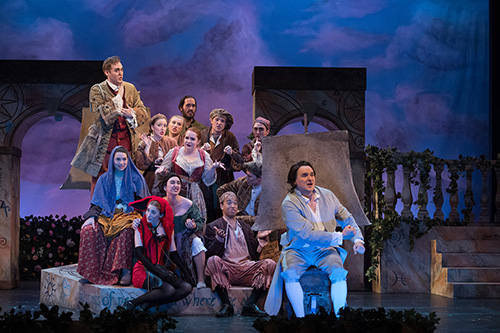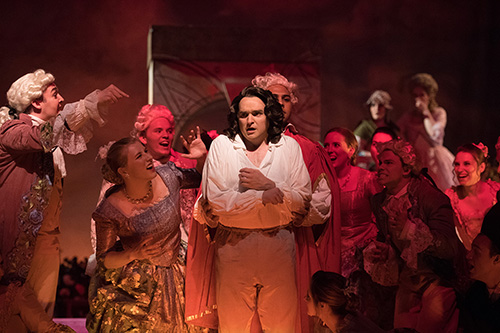by Timothy Robson

Bernstein’s operetta, based on Voltaire’s 1759 novel Candide, has a troubled history. Its 1956 Broadway premiere was a notorious disaster, running for only 73 performances, despite a starry cast that included the young Barbara Cook as Cunegonde, operatic tenor Robert Rounseville in the title role, and stage direction by Tyrone Guthrie. Since then, there have been numerous revisions and versions by later directors. For this production, Ohio Light Opera used a 1999 version prepared by British director John Caird for the Royal National Theatre.



They also pick up more hangers-on, including the Old Woman who has only one buttock (Alexa Devlin) and the trusty servant Cacambo (Jonathan Heller, in a mostly speaking role). Finally, Candide and Cunegonde reconcile and decide to settle for a simpler life as they sing “Make Our Garden Grow,” the inspirational chorus at the end of the show.

Alexa Devlin was hilarious as the Old Woman, especially in her tango, “I Am Easily Assimilated.” It was one of the highlights of this production. The principals and chorus often filled the stage, which left little room for real dancing, so choreographer Spencer Reese devised intricate unison hand movements that can only be described as “voguing.” It was a brilliant solution. The performances of the smaller roles were all excellent.
The difficult orchestral music in Candide is vital to its success, and conductor Steven Byess led the ensemble in an outstanding performance. The chorus was well-prepared and had a unified sound. Although stage director Steven Daigle never let things linger, the length of the show and the story’s intricacies continue to work against it.

A disheveled Cunegonde at the end, with tall wig askew, was a magical touch, a symbol of the uneasy reconciliation between Candide and the world, which is anything but perfect.
Photos by Matt Dilyard.
Published on ClevelandClassical.com July 16, 2018.
Click here for a printable copy of this article



